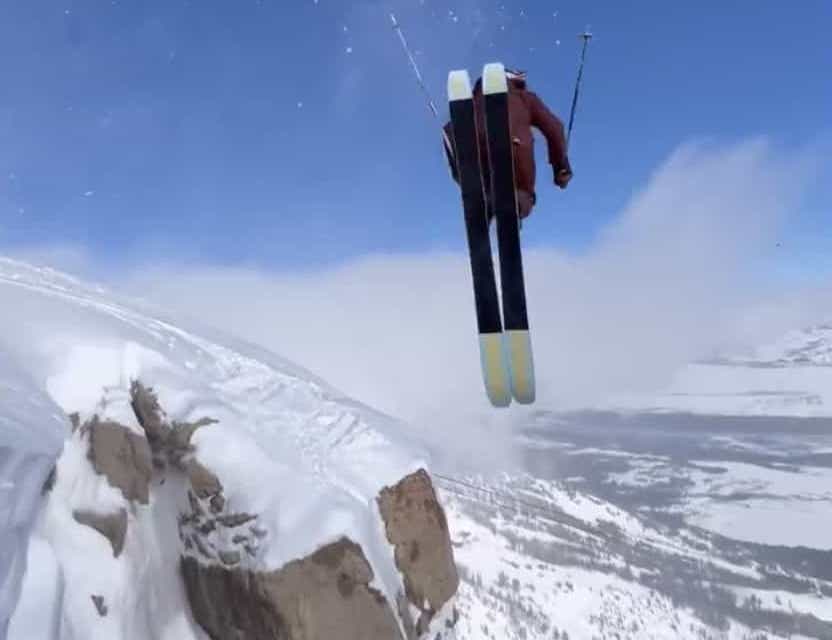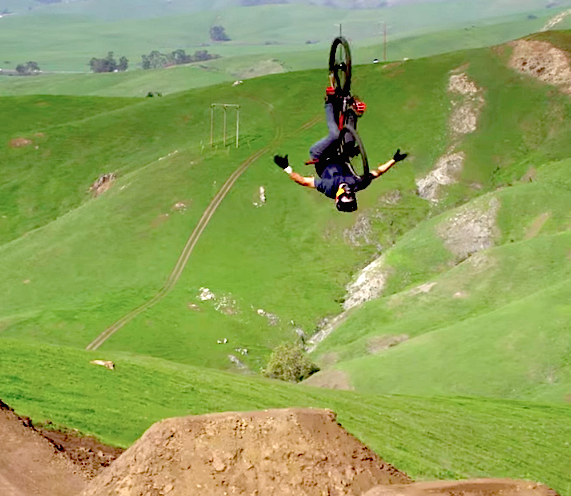
Every skier or snowboarder entering a backcountry environment has the responsibility to know and perform a series of tests before dropping in for sweet, untouched turns. An important step in this process is the ski, or slope, cut.
The National Avalanche Center has been kind enough to explain this technique!
Ski or Slope Cut
A stability test where a skier or rider rapidly crosses an avalanche starting zone to see if an avalanche initiates. Slope cuts can be dangerous and should only be performed by experienced people on small avalanche paths or test slopes.Slope Cuts:
For years, ski patrollers and helicopter ski guides have used what they call “ski cuts” as an effective technique to reduce the odds of getting caught. We like to call them “slope cuts” instead because snowboarders and snowmobilers can do them as well. The idea is that if you trigger an avalanche you want to do it on your terms. That is, you want to do it with your speed built up and heading for an island of safety so that, in theory, if the slope does fracture, your momentum will carry you off of the moving slab.Remember that slope cuts are only a defensive technique to help increase your odds. If you plan to dive into a slope anyway, it’s one of the most important members of the safe-travel ritual which can save your life.
Skiers Technique:
Beginning at the top of a slope, cross the slope rapidly at about a 45 degree angle, aiming at an island of safety such as trees, rocks, high ground at the edge of the avalanche path or a gentler part of the slope. The first person down should do several slope cuts as they descend the top part of the slope.
Snowboarders Technique:
Boarders can use a technique similar to skiers above, but may need to “porpoise” (jump up and down aggressively) the board while traversing in order to apply sufficient load to evaluate the slope. Another method is to traverse, slash hard and retreat to an island of safety. It is important to always travel from one island of safety to another when slope cutting.Snowmobile technique:
Unlike skiers and boarders, snowmobilers have the ability to do slope cuts from the bottom. Instead of doing your first high-mark up the middle of slope, either do a high mark off to the side, or a swooping, traversing high-mark low on the slope where you can get off the slope in a hurry if it does break. Also, when high-marking slopes, go up the center and turn toward the outside so that you have the maximum chance of escaping to the side of a slide if you do trigger it. Don’t forget to jump on smaller test slopes (small slopes that won’t kill you) as well to see how they respond. If you fracture the slope while going uphill and you can’t get off to the side, just grab some throttle and keep heading up in hopes that most of the snow will pass beneath you. If you fracture the slope on the way down and can’t get off to the side, your only choice is to try and outrun the avalanche, which might work for small avalanches but probably not for the big, ones.Slope Cut Caveats
• Although slope cuts work fairly well for soft, shallow slabs slope cuts are much more tricky for hard or deep slabs because they tend to bridge your weight over a wider area and it’s much more difficult for a person to trigger the buried weak layer. Although hard or deep slabs are difficult to trigger, once triggered, they tend to be much larger than soft slabs, they tend to break up above you. Plus, they’re difficult to escape because you must negotiate large, hard blocks. But still, as a defensive technique, slope cuts on hard or deep slabs are better than nothing.
• Slope cuts are not your first few turns or passes on a slope. They are done deliberately to test a slope, and should always be executed under the assumption that you will trigger a slide. If you don’t feel comfortable with the consequences of the slope releasing, don’t do a slope cut! Don’t get cocky just because you’ve successfully cut a few avalanches and escaped. Slope cuts are not a guarantee, they’re just one more tool in your bag of tricks.
• Keep your speed up. Slope cuts depend on momentum to take you off the slab. Don’t get bogged down at the top of a high mark and on skis or snowboard, don’t poke along like a cow. Make like an antelope.
• Use a belay rope. Most serious avalanche professionals carry and use a belay rope, perhaps a lightweight piece of 7 mm x 30 meter rope. The extra pound can prevent countless gray hairs. You can use a belay rope for digging a snowpit on a suspect slope, rappelling past obstacles, slope cutting, kicking or sawing cornices, waiting for an explosive to go off when standing in an insecure spot or doing a rescue. Ropes are good. Carry one.




Good article and video. Ski cutting should always be done with shovel beacon and probe and a partner trained in avy rescue. Airbags are highly recommended!